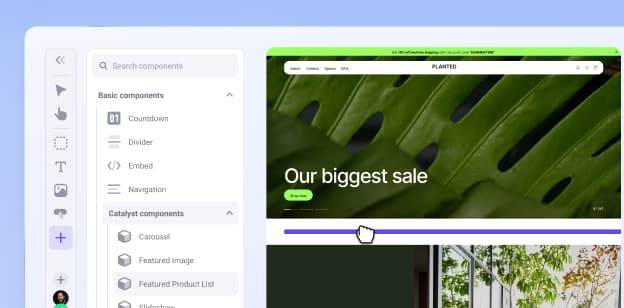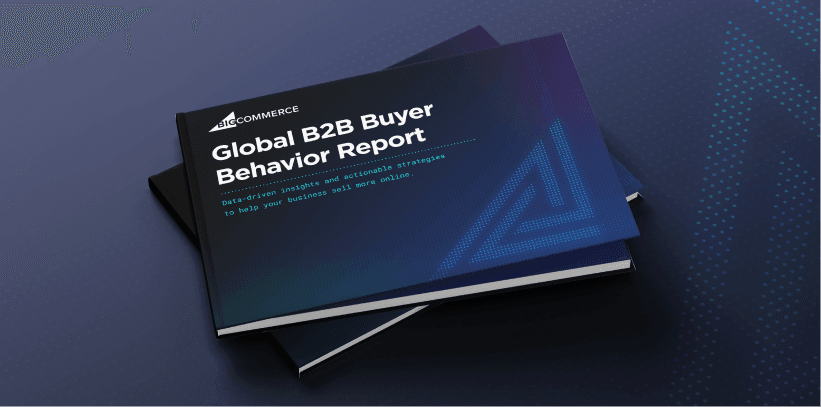by
A key to completing ecommerce transactions is to reduce friction in the checkout process. An online store should want to make it as easy as possible for customers to add a product to the cart, confirm shipping details, and pay.
Basically, don’t give them a reason to abandon their cart.
Considering ecommerce sites have a 70% cart abandonment rate, there is significant room for improved functionality. But how do you do this?
Let’s discuss the advantages of one-page checkouts and how to optimise the customer experience.
One-page checkout vs. one-click checkout
One-page checkout has all the checkout fields displayed on a single page. It is designed to reduce the number of clicks and page loads to make the checkout process quicker and more convenient for customers to get from “add to cart” to “payment details” to “shipping address” and finally finished purchase.
The one-page checkout layout is clean and easy to navigate, with all the information customers need in one place.
One-click checkout — or “buy now” as Amazon has made popular — is a process where customers complete their purchases from the product page with, well, just one click. It is designed to simplify the checkout process further by eliminating the need for customers to fill out multiple forms, like payment information, or enter shipping and billing details repeatedly.
One-Click Checkout uses the customer's stored payment and shipping information to complete the transaction instantly to make a swift, hassle-free checkout option.
Why enterprise businesses should implement one-page checkout
Single-page checkout offers a superior customer experience that has become increasingly popular with ecommerce stores.
Clean navigation.
Instead of navigating through different pages, the checkout process is streamlined on one page, saving customers time and reducing friction. This gets them to the final screen much quicker.
Easy to use.
One-page checkout is less complicated than traditional checkout methods and offers a streamlined process that customers can quickly understand.
The checkout page guides the customer, making it easy and intuitive for them to enter their details, shipping, and billing information quickly.
Efficiency.
Online shoppers are always looking for fast and efficient processes, and the one-page checkout delivers that.
For enterprise businesses, the one-page checkout is a practical solution for busy customers who don’t have the time or patience to go through the traditional long checkout process.
It provides convenience, which can translate into customer satisfaction.
Better user experience.
The UX benefits of one-page checkout are better for the customer and get them through the process quicker. Scrolling through sections of a page versus clicking through multiple parts of the checkout process is seemingly a much better option.
One-page checkout challenges to be aware of
With all of its benefits, a one-page checkout solution can also present challenges to ecommerce platforms and stores alike.
One-page checkout can overwhelm the user with choices.
One-page checkout can include complex designs that inundate the customer with information, upsells, and choices. Depending on the audience, a business might want to avoid this kind of design and have the checkout feature on multiple pages with fewer fields.
Can lead to longer load times.
While the total load time is likely less than loading multiple pages, loading a single “long” page can be demanding on older devices or for those with slower internet speeds.
Data collection can be more difficult.
Data is vital to ecommerce businesses, who use it to get better insights into customers. However, a one-page checkout can limit the analytics that can be collected, leading to less reliable insights.
Without multi-step checkout, it’s more difficult to understand how a customer got from a landing page to the cart page to the checkout form. It’s also more challenging to understand abandoned carts.
The ideal one-page checkout page
Optimising the one-page checkout experience is important for getting over the final hurdle and having the customer submit an order.
BigCommerce’s native one-page checkout, for example, helps improve conversion rates, including when customers feature alternate payment methods such as PayPal Wallet or Apple Pay.
Continuously updates.
This is an iterative process that will never be completed. Constantly review performance and make improvements where you think friction is occurring.
Includes the final price in the final CTA.
Add a call to action, including the final order value, that stands out. You want your customers to know exactly what they need to do to complete their purchase. Make the CTA a bright colour, larger in size, and with clear text such as "Order Now for $49.99".
Limits the numbers of form fields and simplifies lengths.
A good one-page checkout process doesn’t ask for information unless it’s absolutely necessary. Artificially lengthening pages can have a detrimental impact on conversion rates.
Mobile-friendly.
A vast amount of ecommerce sales are done on mobile devices and is expected to grow to 62% by 2027. If your site isn’t optimised for a mobile experience — or doesn’t have a dedicated app — your brand is not providing the best user experience.
Provides easy access to support personnel.
Make contacting your customer support team easy by including multiple methods to reach them. Give strong consideration to a staffed pop-up chatbot that will provide real-time information without forcing the customer to leave the one-page checkout experience.
Replatforming Guide: A Roadmap for Migrating Your Ecommerce Store
Make your ecommerce replatforming project a success with our step-by-step guide filled with best practises from enterprise migration experts.
The final word
The majority of online shoppers have the habit of abandoning their carts just when they are ready to make a purchase. This can be frustrating for any online store that is trying to boost their online sales.
A one-page checkout provides a solution to this problem, providing a simplified checkout process that allows for a user-friendly approach that completes purchases quickly, efficiently, and seamlessly.



